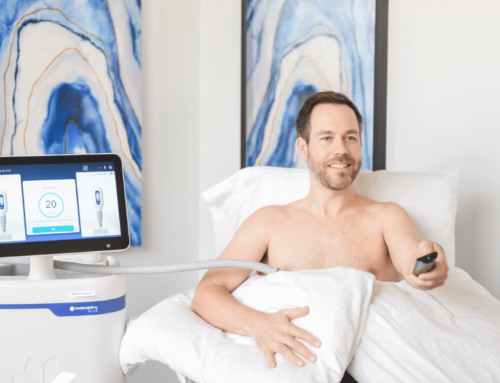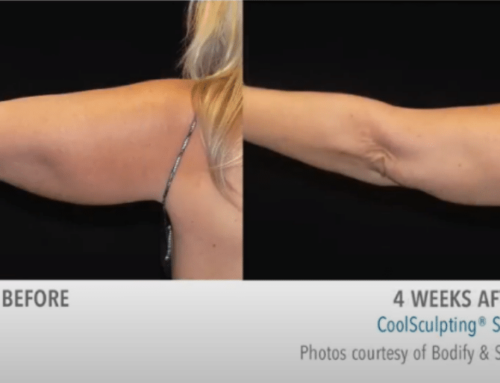
You’ve decided: It’s time to get rid of the stubborn fat on your double chin, unloved love handles, or pesky batwings. After doing your research, you know the direction you’re headed, and now the debate starts: CoolSculpting vs liposuction? Both remove fat. And both remove fat permanently. Yet they’re very different experiences.
When making the CoolSculping vs liposuction decision, keep these five facts in mind to make the choice that’s best for you, your lifestyle, and your goals:
CoolSculpting vs Liposuction Fact #1: Non-invasive vs Invasive
When determining which option is the best choice for you, one of the most important considerations might be whether or not the procedure is invasive. Liposuction requires an incision through which a hollow tube is inserted to suck out the fat. Although it’s a small incision, it will require time to heal and will result in a scar.
CoolSculpting, on the other hand, is completely non-invasive. Special applicators are applied externally and use targeted cooling to kill fat cells. No incisions, surgical tape, staples, or stitches are needed. As a side benefit, if you have any medical conditions that might put you at risk during a surgical procedure, you can choose CoolSculpting without any concerns.
CoolSculpting vs Liposuction Fact #2: No anesthesia vs Anesthesia
Liposuction is a surgical procedure that occurs in a medical office and requires either general or local anesthesia. And with that comes potential health dangers.
CoolSculpting treatments are completed in a comfortable, spa-like boutique—with no anesthesia. That means no shots, no groggy feeling, no recovery wake-up period, and no risks of allergic reaction. If you’re sensitive to anesthesia, the CoolSculpting vs liposuction decision is an easy one for you on this particular point.

CoolSculpting vs Liposuction Fact #3: a Little vs a Lot
CoolSculpting is designed to trim and sculpt the body. It works best on individuals who are already in shape and just need a little help getting rid of stubborn fat. If you’re within 5 to 35 pounds of your target weight, you’re an ideal CoolSculpting candidate. Meanwhile, because liposuction is more aggressive, more fat can be removed during the procedure.
If the area or areas you need help with have a little fat to trim away, CoolSculpting is a terrific option for you. If your goals are more aggressive, you can amplify results with a number of successive CoolSculpting sessions; it will just take more time. When you have goals to reach now or a lot of fat to lose, liposuction may be the best choice for you.
CoolSculpting vs Liposuction Fact #4: Zero Downtime vs Recovery Time
Want your busy life to stay on track? With CoolSculpting, there is no downtime. That’s right, Z-E-R-O. You’re free to work, play, exercise, whatever—with no restrictions—as soon as you complete your treatment.
Liposuction, given that it is a surgical procedure, requires up to several weeks of recovery. Your body needs to heal from the incision, and you may experience bruising and swelling as well. You can expect 3–5 days of real downtime followed by a restriction from heavy lifting and exercise for the rest of the 3–4 weeks.
CoolSculpting vs Liposuction Fact #5: Minimal Side Effects vs Possible Side Effects
Because it’s non-invasive and non-surgical, CoolSculpting’s side effects are minimal. The biggest issues patients have include some bruising or stinging at the application area.
Liposuction, on the other hand, comes with possible surgical side effects including blood clots and negative reactions to anesthesia. Other issues may include skin irregularities such as lumps, infection, temporary or permanent numbness, bruising, and swelling.
Learn More and Make a Smart Choice
CoolSculpting vs liposuction: Have you made your choice or are you still not sure? It’s always smart to conduct your own research and learn all you can to make the right decision. We’d love to explain CoolSculpting in more detail in our comfortable Phoenix office. Schedule your complimentary consultation now to meet us and get answers to all of your questions.






